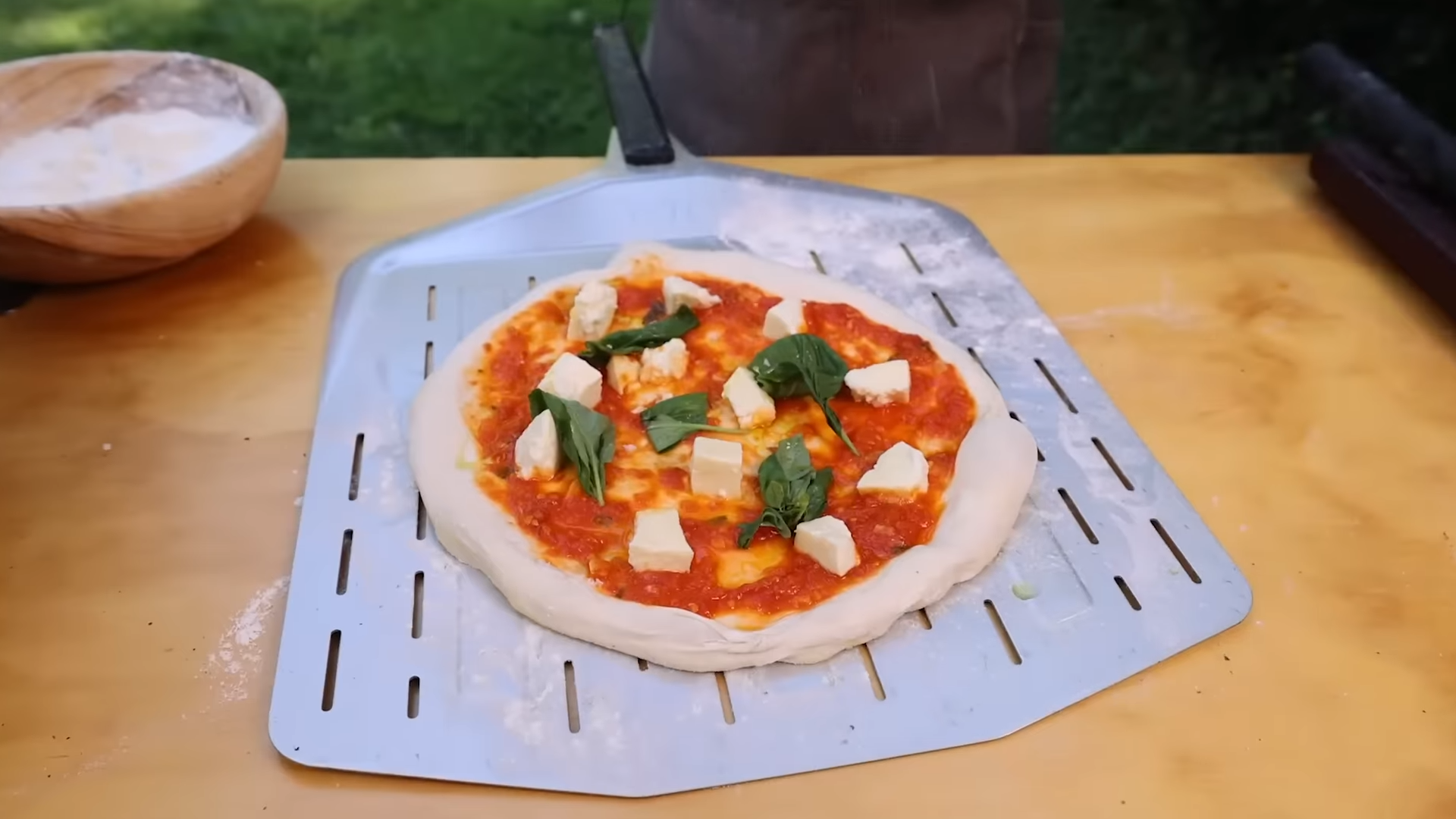Neapolitan pizza recipe is renowned for its authentic simplicity, originating from Naples, Italy. With its thin, airy crust and minimal yet high-quality ingredients, it’s no surprise that pizza enthusiasts around the world crave this iconic style. In this guide, we’ll take you through every step of the process, from crafting the perfect dough to adding the right toppings, ensuring you can recreate this culinary masterpiece at home.
What Makes Neapolitan Pizza Unique?
Unlike other styles, Neapolitan pizza recipe is all about balance—thin crust with a soft center, slightly charred edges, and fresh ingredients. Its unique qualities come from specific elements, such as the use of San Marzano tomatoes and high-heat cooking in a traditional wood-fired oven.
One of the keys to getting that iconic texture is the use of 00 flour. It’s finely milled and creates a soft, elastic dough that’s perfect for high-temperature cooking. For more on the importance of selecting the right flour and technique, check out this Baked Ziti recipe with no meat that also benefits from a careful choice of ingredients.
Key Ingredients in Neapolitan Pizza
The ingredients are simple, but each plays a vital role in achieving the right taste and texture:
- Flour: 00 flour is essential for achieving the right consistency.
- Water: Hydration is critical in creating a dough that is light and airy.
- Salt: Enhances the flavor of the dough.
- Yeast: Both fresh and dry yeast work, though fresh yeast is more traditional.
Another dish that uses minimal ingredients for maximum flavor is this Tiktok cinnamon roll recipe, where technique plays a crucial role.
Making the Neapolitan Pizza Dough
Step 1: Mixing Ingredients
Combine 500 grams of 00 flour, 300 grams of water, 10 grams of sea salt, and 3 grams of yeast in a large bowl. Mix until you form a dough.
Step 2: Kneading
Knead the dough for 10-15 minutes. The kneading process is essential for gluten development, which contributes to the dough’s elasticity.
Step 3: Fermentation
Allow the dough to rise at room temperature for at least 8 hours or, ideally, up to 24 hours. This long fermentation time helps develop the flavor and texture.
The Cooking Process
Traditionally, Neapolitan pizza is cooked in a wood-fired oven at temperatures of 900°F. For home ovens, use a pizza stone and preheat to the highest temperature (500°F-550°F). Baking the pizza in under 90 seconds at this heat gives it the characteristic charred edges and chewy crust.
You can learn more about the importance of San Marzano tomatoes in Italian cuisine by visiting this guide to San Marzano tomatoes.
Toppings for Neapolitan Pizza
Classic pizza Margherita remains a fan favorite with its simple combination of:
- San Marzano tomatoes for sauce
- Mozzarella di Bufala or Fior di Latte
- Fresh basil leaves
- A drizzle of extra virgin olive oil
For other topping inspirations or to try something savory and unexpected, check out this unique Old-fashioned peanut butter chocolate frosting recipe, which highlights the beauty of combining rich ingredients.
FAQs About Neapolitan Pizza
What makes Neapolitan pizza different?
Neapolitan pizza is distinct due to its thin, airy crust and minimal toppings, focusing on the quality of ingredients like San Marzano tomatoes and fresh mozzarella.
What are the ingredients of Neapolitan pizza?
The dough is made from just four ingredients: 00 flour, water, salt, and yeast. Toppings typically include San Marzano tomatoes, mozzarella, basil, and olive oil.
What is the 55 rule for pizza?
The 55 rule refers to maintaining a 55-60% hydration ratio in the dough, which helps create the soft, chewy texture characteristic of Neapolitan pizza.
What is special about Neapolitan pizza dough?
The dough undergoes a long fermentation process and is cooked at extremely high temperatures, resulting in a chewy, soft interior with perfectly charred edges.
By following this guide, you can recreate an authentic Neapolitan pizza in your own kitchen, impressing family and friends with a dish steeped in Italian tradition.
For more delicious recipes and inspirations, visit Recipesada.

